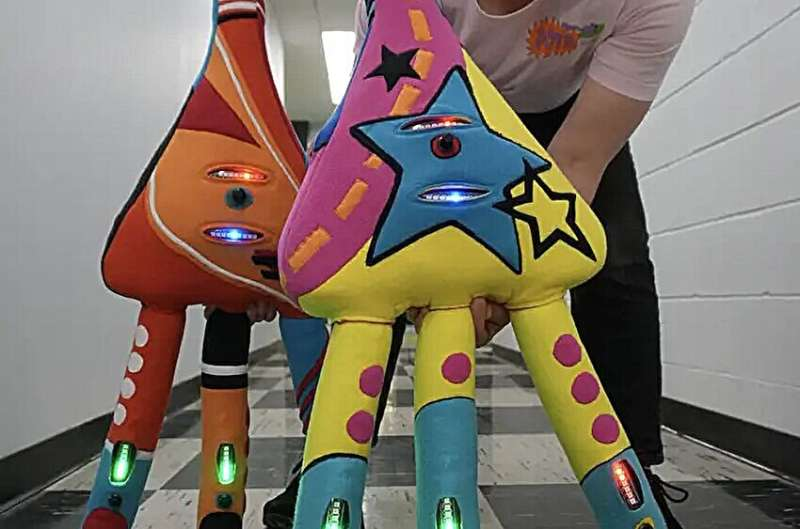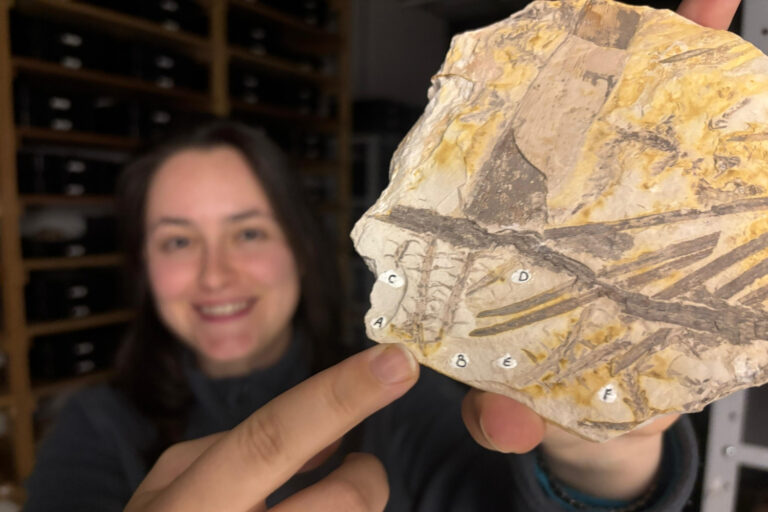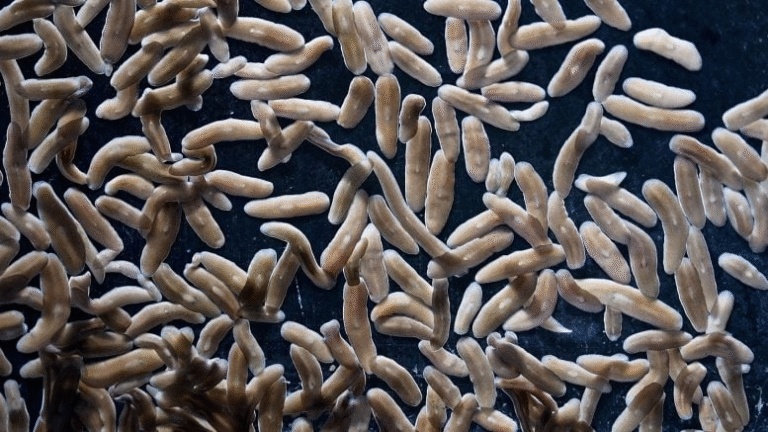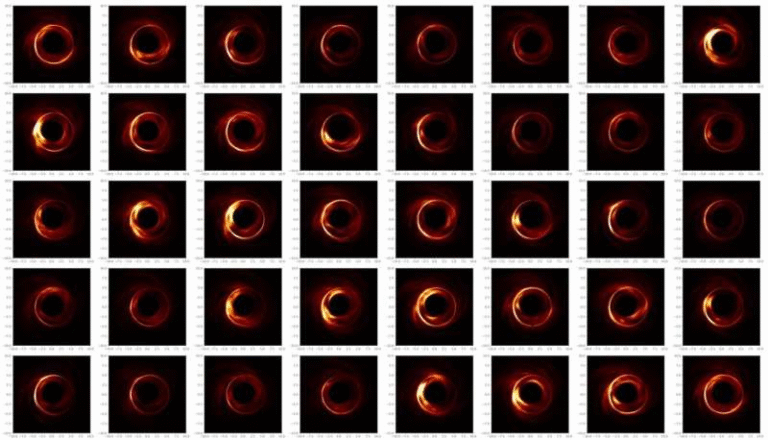Carnegie Mellon University’s Plush Neuron Makes Artificial Intelligence Easy for Middle Schoolers

Carnegie Mellon University has introduced a 3-foot-tall, squishy, LED-powered Plush Neuron designed to help middle school students understand the building blocks of artificial intelligence. This hands-on educational tool transforms a single artificial neuron into something students can touch, squeeze, and experiment with, making a topic that often requires algebra and abstract thinking far more understandable for younger learners.
Developed within CMU’s Integrative Design, Arts and Technology (IDeATe) network, the Plush Neuron combines electronics, software, textiles, and design to create a fully functional demonstration of how a computational neuron processes inputs, applies weights, compares thresholds, and ultimately “fires.” With AI literacy becoming increasingly important, this project aims to give students a tangible way to explore decision-making logic and understand how modern AI systems work at the most basic level.
A Clear Goal: Making AI Concepts Accessible Before Algebra
The team behind the Plush Neuron started with a simple mission: help middle school students understand how AI makes decisions even before they learn algebra. For years, CMU Research Professor Dave Touretzky has focused on K–12 AI education and has worked on ways to present complex concepts in ways young learners can grasp.
His earlier creation, a browser-based tool called Neuron Sandbox, introduced students to decision-making problems and visualization of how artificial neural networks operate. The new Plush Neuron acts as a physical companion to that tool, allowing students to interact with an actual model instead of only watching a digital simulation.
How the Plush Neuron Works
The Plush Neuron simplifies a real artificial neuron while still preserving the important mechanics:
- It has three input areas, referred to as dendrites, each equipped with a squeezable button.
- Students can adjust the weight of each input using rotary switches.
- The LED display on each dendrite shows weight values ranging from –4 to +4, with negative values highlighted using red LEDs and positive values using green LEDs.
- Once a student presses the dendrite buttons, the signals travel to the neuron’s soma, which sums them up and compares the result to a threshold (also shown on an LED display).
- If the combined input exceeds the threshold, the neuron’s axon flashes lights and plays a sound to indicate that it has fired.
This layout directly mirrors how simplified artificial neurons operate in machine learning. Students can see how adjusting weights changes the outcome, which helps them understand how bias, logic, and decision-making interplay inside an AI system.
Who Built It: An Interdisciplinary Collaboration
This project represents a unique collaboration across CMU departments:
- Dave Touretzky programmed the neuron’s software and guided the AI education components.
- Cody Soska, an IDeATe Technical Specialist and graduate student, created the electronic hardware and acted as the main design-engineer.
- Zarmond Goodman, a Dietrich College senior studying film, visual media, physical computing, and art, replicated Soska’s prototype and assembled all 10 completed neurons, spending hundreds of hours soldering, building, and filming demo materials.
- Textile specialists Olivia Robinson and Natalya Pinchuk designed and crafted the plush exterior. They had to solve the challenge of hiding a “shoebox’s worth of electronics” inside a soft, child-friendly structure while ensuring the neuron kept its shape and protected the components.
To achieve this, they constructed layered foam interiors and custom “shapewear” structures that stabilized knobs, displays, and wiring. Their goal was to create something bright, tactile, soft, and inviting, tapping into the emotional associations children have with plush toys so the learning experience became both memorable and approachable.
The Neuron’s Role in Teaching AI and Ethics
The Plush Neuron isn’t just a science demonstration. It is also intended to introduce students to the ethics of AI, showing how weight assignments influence decisions:
- By changing weights, students can see how outcomes shift.
- They can create simple logic problems and observe how the neuron processes them.
- The model illustrates how biased weights can lead to biased outputs, laying the groundwork for discussions about fairness and responsibility in AI systems.
For educators who want to talk about AI responsibly, this device provides an accessible entry point.
Bringing the Plush Neuron to Educators
The Plush Neuron has already begun circulating among teachers and AI-education specialists:
- It debuted at the 15th Symposium on Educational Advances in Artificial Intelligence (EAAI-25) earlier this year.
- It was used at the AI4MiddleSchools Cohort workshop in Atlanta to train teachers.
- It was presented at the International Symposium on Academic Makerspaces (ISAM) at UC Berkeley.
This fall, completed neurons were shipped to:
- Christina Gardner-McCune at the University of Florida (leader of AI4MiddleSchools)
- Amber Jones, a computer science education consultant and former middle school teacher from Atlanta
- Will Hanna, a computer science teacher at Thomas County Middle School in Georgia
These early adopters have previously worked with Touretzky through the AI4GA (Artificial Intelligence for Georgia) initiative and will be the first to field-test the Plush Neuron in real classrooms.
Additional Context: Understanding Artificial Neural Networks
To give readers a broader perspective, here’s a quick overview of how artificial neural networks work and why tools like the Plush Neuron matter.
Artificial neural networks (ANNs) are the foundation of modern AI systems. They’re built from layers of interconnected nodes—artificial neurons—that each perform simple calculations. While a single neuron is limited, large networks of neurons can handle tasks such as image recognition, language processing, and decision modeling.
Key components of an ANN include:
- Inputs
Data sent into the network. - Weights
Adjustable values that determine the importance of each input. - Threshold/Activation
The condition that determines whether a neuron fires. - Outputs
Signals passed to the next layer of neurons.
The Plush Neuron only demonstrates a single-node model, but this is exactly where AI education begins. Understanding weights, inputs, and firing thresholds is essential before tackling concepts like hidden layers, backpropagation, training data, or optimization algorithms.
For middle school students, having a physical object that demonstrates these concepts through lights, buttons, and sounds makes the experience clearer than abstract math alone.
The Importance of Tactile Learning in AI Education
Educational research consistently shows that tactile, hands-on learning:
- Increases engagement
- Strengthens memory formation
- Improves comprehension of systems and mechanics
- Helps students who struggle with abstract visualization
Since AI can be especially difficult to visualize, the Plush Neuron uses touch, color, sound, and physical interaction to turn something computational into something children can literally hold in their arms. This approach bridges the gap between everyday experiences and advanced technology.
Looking Ahead
The Plush Neuron stands out as a friendly, kid-safe educational device that may inspire a new wave of tangible AI teaching tools. As AI continues to shape industries, education, and daily life, introducing students to its fundamental concepts early—and in a way that sparks curiosity—could become essential.
Whether this model eventually scales to include multi-neuron networks, classroom kits, or open-source designs remains to be seen. But for now, it is already helping teachers start meaningful conversations about how AI thinks, decides, and sometimes errs.
Research Reference:
https://www.cmu.edu/news/stories/archives/2025/november/plush-neuron-makes-ai-approachable.html





